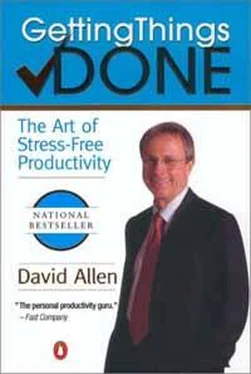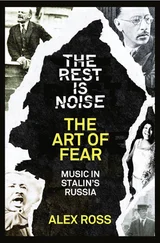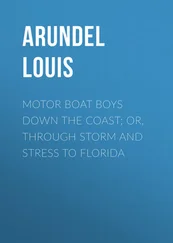If you played along with me, you probably noticed that the saliva content in your mouth increased at least a bit. Your body was actually trying to process citric acid! And it was just in your mind.
If your body responds to the pictures you give it, how are you likely to feel physically when you think about, say, doing your taxes? Are you sending yourself "easy," "let's go," completion, success, and "I'm a winner!" pictures? Probably not. For just that reason, what kinds of people would logically be the most resistant to being reminded about a project like that—that is, who would procrastinate the most? Of course, it would be the most creative, sensitive, and intelligent people! Because their sensitivity gives them the capability of producing in their minds lurid nightmare scenarios about what might be involved in doing the project, and all the negative consequences that might occur if it weren't done perfectly! They just freak out in an instant and quit!
I am an old man and have known a great many troubles, but most of them never happened.
— Mark
Who doesn't procrastinate? Often it's the insensitive oafs who just take something and start plodding forward, unaware of all the things that could go wrong. Everyone else tends to get hung up about all kinds of things.
Do my taxes? Oh, no! It's not going to be that easy. It's going to be different this year, I'm sure. I saw the forms—they look different. There are probably new rules I'm going to have to figure out. I might have to read all that damn material. Long form, short form, medium form? File together, file separate? We'll probably want to claim deductions, but if we do we'll have to back them up, and that means we'll need all the receipts. Oh, my God—I don't know if we really have all the receipts we'd need and what if we didn't have all the receipts but we claimed the deductions anyway and we got audited? Audited? Oh, no—the IRS—JAIL!!
And so a lot of people put themselves in jail, just glancing at their 1040 tax forms. Because they're so smart, sensitive, and creative. In my many years of coaching individuals, this pattern has been borne out more times than I can count—usually it's the brightest and most sophisticated folks who have the most stuck piles, in their offices, homes, and heads. Most of the executives I work with have at least several big, complex, and amorphous projects stacked either on a credenza or on a mental shelf. There always seem to be hobgoblin thoughts lurking inside them — "If we don't look at or think about the projects, maybe they'll stay quiet!"
Ceasing negative imaging will always cause your energy to increase.
So what's the solution? There's always having a drink. Numb it out. Dumb it down. Notice what happens to many people when they get a little alcohol on the brain. It should drop their energy immediately, because it's a depressant; often, though, the energy lifts, at least initially. Why? The alcohol is depressing something—it's shutting down the negative self-talk and uncomfortable visions that are going on in these folks' minds. Of course my energy will increase if I stop depressing myself with overwhelming pictures of not handling something successfully. But the numb-out solutions are temporary at best. The "stuff doesn't go away. And unfortunately, when we numb ourselves out, we can't do it selectively— the source of inspiration and enthusiasm and personal energy also seems to get numbed.
Intelligent Dumbing Down
There is another solution: intelligently dumbing down your brain by figuring out the next action. You'll invariably feel a relieving of pressure about anything you have a commitment to change or do, when you decide on the very next physical action required to move it forward. Nothing, essentially, will change in the world. But shifting your focus to something that your mind perceives as a doable, completeable task will create a real increase in positive energy, direction, and motivation. If you truly captured all the things that have your attention during the mind-sweep, go through the list again now and decide on the single very next action to take on every one of them. Notice what happens to your energy.
No matter how big and tough a problem may be, get rid of confusion by taking one little step toward solution. Do something.
—George F.
You are either attracted or repelled by the things on your lists; there isn't any neutral territory. You are either positively drawn toward completing the action or reluctant to think about what it is and resistant to getting involved in it. Often it's simply the next-action decision that makes the difference between the two extremes.
Everything on your lists and in your stacks is either attractive or repulsive to you— there's no neutral ground when it comes to your stuff.
In following up with people who have taken my seminars or been coached by my colleagues or me, I've discovered that one of the subtler ways many of them fall off the wagon is in letting their action lists grow back into lists of tasks or subprojects instead of discrete next actions. They're still ahead of most people because they're actually writing things down, but they often find themselves stuck, and procrastinating, because they've allowed their action lists to harbor items like:
"Meeting with the banquet committee""Johnny's birthday""Receptionist""Slide presentation"
In other words, things have morphed back into "stuffness instead of staying at the action level. There are no clear next actions here, and anyone keeping a list filled with items like this would send his or her brain into overload every time he/she looked at it.
Is this extra work? Is figuring out the next action on your commitments additional effort to expend that you don't need to? No, of course not. If you need to get your car tuned, for instance, you're going to have to figure out that next action at some point anyway. The problem is that most people wait to do it until the next action is "Call the Auto Club for tow truck!!"
You can only cure retail but you can prevent wholesale.
— Brock Chisohn
So when do you think most people really make a lot of their next-action decisions about their stuff-—when it shows up, or when it blows up? And do you think there might be a difference in the quality of their lives if they handled this knowledge work on the front end instead of the back? Which do you think is the more efficient way to move through life—deciding next actions on your projects as soon as they appear on your radar screen and then efficiently grouping them into categories of actions that you get done in certain uniform contexts, or avoiding thinking about what exactly needs to be done until it has to be done, then nickel-and-diming your activities as you try to catch up and put out the fires?
Avoiding action decisions until the pressure of the last minute creates huge inefficiencies and unnecessary stress.
That may sound exaggerated, but when I ask groups of people to estimate when most of the action decisions are made in their companies, with few exceptions they say, "When things blow up." One global corporate client surveyed its population about sources of stress in its culture, and the number one complaint was the last-minute crisis work consistently promoted by team leaders who failed to make appropriate decisions on the front end.
The Value of a Next-Action Decision-Making Standard
I have had several sophisticated senior executives tell me that installing "What's the next action?" as an operational standard in their organizations was transformative in terms of measurable performance output. It changed their culture permanently and significantly for the better.
Why? Because the question forces clarity, accountability, productivity, and empowerment.
Читать дальше











